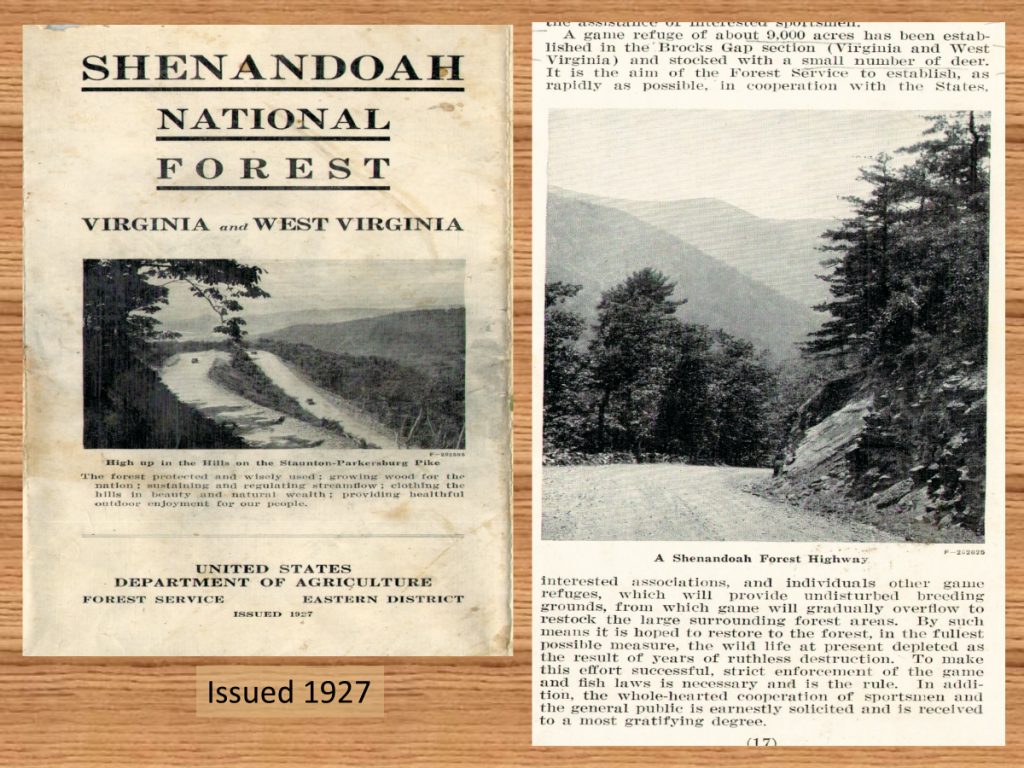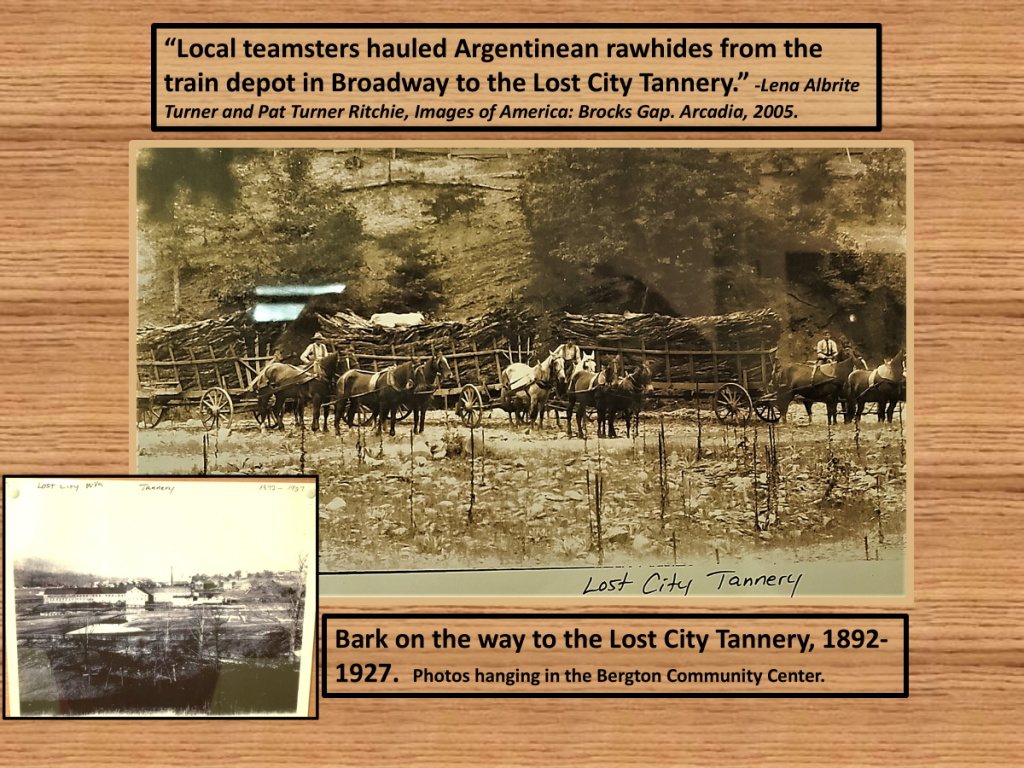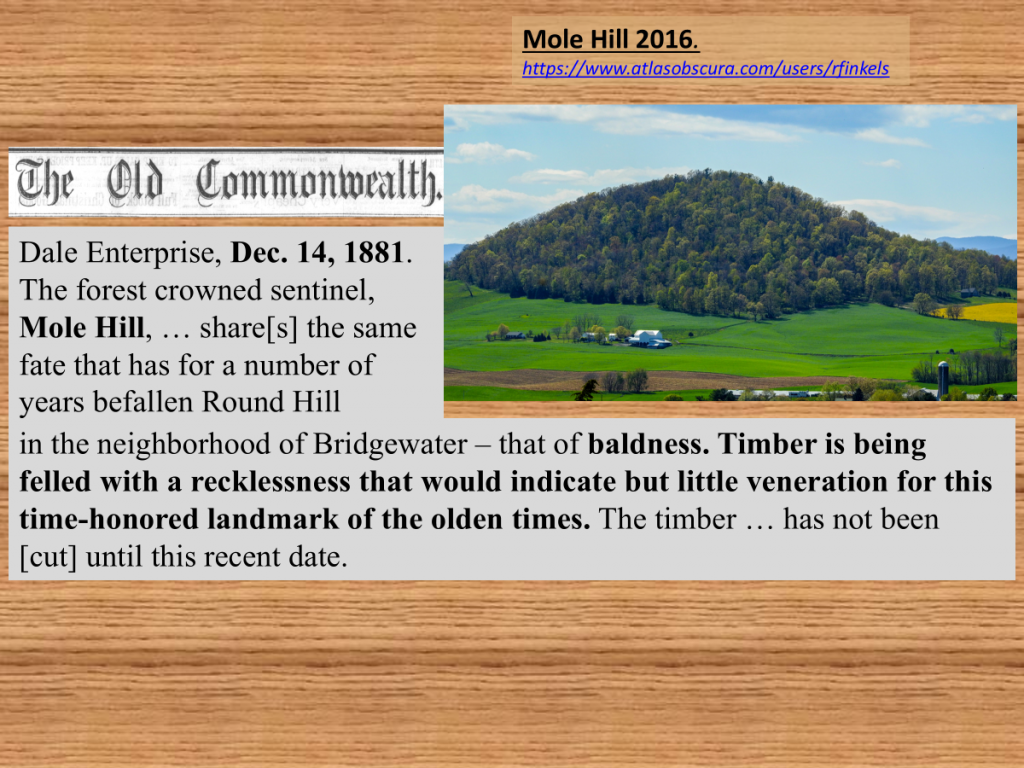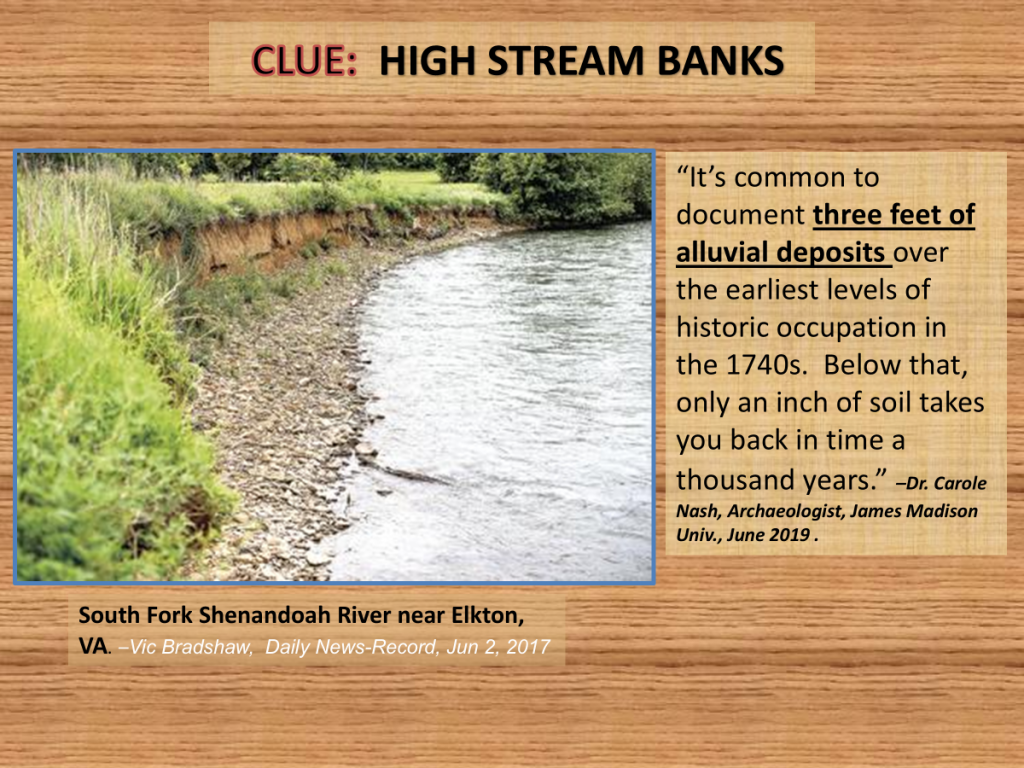
Rural Emergency Response Station
02/03/2025




I’ve given this PowerPoint about the history and consequences of the massive forest destruction of the Appalachian Mountains to various groups in the last several years. Of course, I tailor each presentation to the audience. So for the 2025 Brocks Gap Heritage Day, Brocks Gap being a location that is close to my home and my heart, I included local references that almost everyone there would likely be familiar with.

Shenandoah National Forest became George Washington National Forest in the 1930s to avoid confusion when Shenandoah National Park was inaugurated. This map describes a game refuge established to protect deer brought from out West to restock the nearly extirpated local herds, but the refuge was not delineated on the map itself, for protection against poachers!

Tanbark was the biggest industry in the woods until the Great Logging Deforestation of 1880-1930.

In Virginia’s temperate climate, Mole Hill in the Shenandoah Valley has regrown forest since being clearcut in 1881, although it is a very different woods from the huge trees of the original old-growth.

The bare state of this mountain near the VA-WV border indicates the devastated condition of millions of mountain acres by 1930.

Dr. Nash compared the massive erosion in less than three centuries of European settlement in the Shenandoah Valley and surrounding mountains with that of 1,000 years of Native occupation.